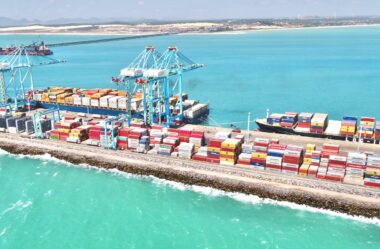Tempo de leitura: 4 minutos
Free Trade Area (FTA) and Free Trade Zone (FTZ) are two concepts that are easily confused. Although both aim to promote trade liberalization, they are essentially different and are not the same in terms of scope, applicable objects, and policy preferences. Let’s take a look at the definitions, scope, applicable objects, and policies.
What are the similarities and differences in benefits, purposes, advantages, and disadvantages?
1. Definition
FTA is the abbreviation of Free Trade Area and Free Trade Agreement. It is established based on the agreement between multiple countries (independent customs areas). By signing the agreement, based on the most favored nation’s treatment of the WTO, Further open markets to each other, eliminate tariffs and non-tariff barriers for most goods in phases, and improve market entry conditions for services and investments, thereby forming a specific area for trade and investment liberalization that covers all tariff territories of each member.
FTZ (Free Trade Zone) is also called a Foreign Trade Zone or Tax-Free Trade Zone. Engage in trade, warehousing, logistics, container (item) distribution, re-export, transshipment, contract transportation, customs declaration services, assembly, reorganization, packaging, repair, assembly, processing, manufacturing, inspection, testing, exhibition or In principle, technical service enterprises are not subject to restrictions on import and export operations, special taxation regulations, etc. A small, specific area that enjoys preferential tax rates and special supervision policies.
2. Area
The scope of an FTA covers the entire customs territory of all members who have signed the free trade agreement. For example, the North American Free Trade Agreement (NAFTA) covers the United States, Canada, and Mexico.
The scope of FTZ is limited to a small specific area within a certain country or region. For example, China’s Shanghai Pilot Free Trade Zone is limited to parts of the Pudong New Area in Shanghai.
3. Applicable objects
The FTA is applicable to enterprises and individuals in all member countries or regions. For example, under the NAFTA framework, U.S. companies can freely enter the Canadian and Mexican markets and enjoy the same treatment as local companies.
FTZ is applicable to all enterprises regardless of their nationality or region. For example, in the Shanghai Pilot Free Trade Zone, both foreign-funded enterprises and domestic-funded enterprises can enjoy the same preferential policies.
4. Policy benefits
FTA policy benefits mainly include tariff reductions and elimination of non-tariff barriers. For example, under the NAFTA framework, tariffs on most goods have been reduced to zero. In addition, FTAs may also include improved market access conditions for services and investments.
FTZ’s policy preferences mainly include tariff reductions and exemptions, tax incentives and special regulatory policies. For example, in the Shanghai Free Trade Pilot Zone, imported goods are exempt from import duties and value-added tax; companies can enjoy income tax concessions; and foreign exchange management is more convenient.
5. Purpose
The main purpose of FTA is to promote regional trade liberalization and enhance regional economic competitiveness. For example, the establishment of NAFTA effectively promoted trade and economic development in North America.
The main purposes of FTZ include promoting trade and investment liberalization, attracting foreign investment, and developing regional economy. For example, the establishment of the Shanghai Pilot Free Trade Zone aims to create a new highland for China’s open economy.
6. Cases of FTA and FTZ
FTA case: North American Free Trade Agreement (NAFTA) European Free Trade Area (EFTA) ASEAN Free Trade Area (AFTA)
FTZ case: China Shanghai Free Trade Zone Qianhai Shekou Free Trade Zone, Shenzhen, China
7. Advantages
The advantage of a free trade area (FTA) is that it promotes trade liberalization among participating countries, expands market size, reduces trade costs, and improves overall economic benefits. By eliminating tariffs and trade restrictions, FTAs can increase trade volume, promote resource allocation efficiency, and stimulate economic growth.
The advantage of the Free Trade Zone (FTZ) is that it has greater policy flexibility, can attract foreign investment, promote industrial upgrading, and inject new impetus into regional economic development. FTZ usually implements preferential tax policies and special regulatory measures, attracting many companies to set up production bases and trade centers in the area. In addition, the establishment of FTZ can also promote technological innovation and talent training and enhance the competitiveness of the regional economy.
8. Disadvantages
FTAs have some disadvantages. For example, the negotiation process may be complex and lengthy, and divergent interests among different countries may lead to difficulties and delays in agreement negotiations. In addition, the implementation of FTA may cause specific industries in some countries to be affected, causing employment and income imbalances.
FTZ also has some shortcomings, such as the dominance of a single country that may lead to insufficient international influence, and the risk of abuse and loss of control of special regulatory policies, which requires strengthening supervision and regulation.







Os comentários foram encerrados, mas trackbacks e pingbacks estão abertos.